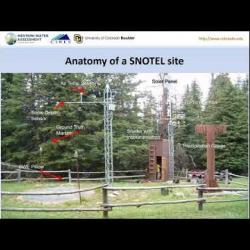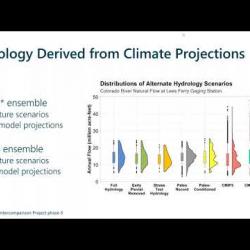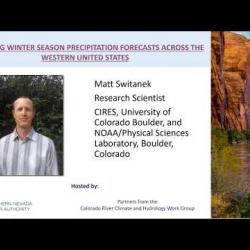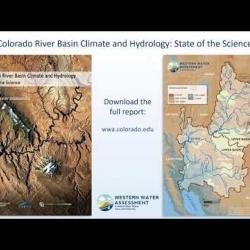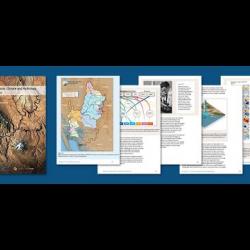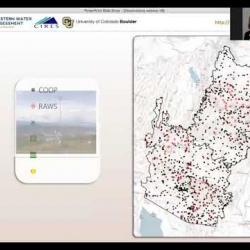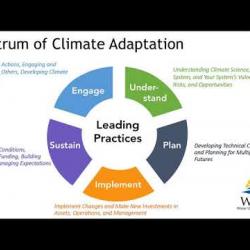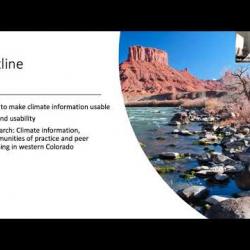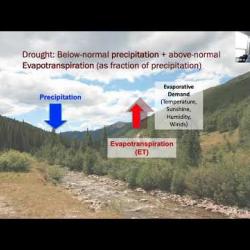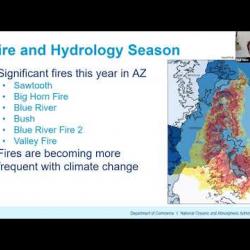-
Snowpack Monitoring in the Rocky Mountain West Webinar, Part 1: Observations
-WebinarPart 1 of a two-part webinar in which we shared Snowpack Monitoring in the Rocky Mountain West: A User Guide. Guest speakers Karl Wetlaufer (NRCS) and Jeff Deems (CIRES) discussed the details of snowpack observations, both in situ and remotely sensed: Where, how, and what data are collected, how are they organized, and how are they accessed?
-
Decision Science
-WebinarColorado River Hydrology Research Symposium Webinar Series. This three-part series expands on the opportunities identified in the 2020 Colorado River Basin Climate and Hydrology: State of the Science report. The series, hosted by the Southern Nevada Water Authority (SNWA) and partners from the Colorado River Climate and Hydrology Work Group, highlights the latest weather and streamflow data, tools, and research that could potentially be used to improve Colorado River water resources management.
-
Prospects for Advancing Hydroclimatic Prediction at Seasonal and Longer Timescale
-WebinarColorado River Hydrology Research Symposium Webinar Series. This three-part series expands on the opportunities identified in the 2020 Colorado River Basin Climate and Hydrology: State of the Science report. The series, hosted by the Southern Nevada Water Authority (SNWA) and partners from the Colorado River Climate and Hydrology Work Group, highlights the latest weather and streamflow data, tools, and research that could potentially be used to improve Colorado River water resources management.
-
New Models and Data to Inform the River Forecast Center Water Supply Forecasts
-WebinarColorado River Hydrology Research Symposium Webinar Series. This three-part series expands on the opportunities identified in the 2020 Colorado River Basin Climate and Hydrology: State of the Science report. The series, hosted by the Southern Nevada Water Authority (SNWA) and partners from the Colorado River Climate and Hydrology Work Group, highlights the latest weather and streamflow data, tools, and research that could potentially be used to improve Colorado River water resources management.
-
Colorado River Basin Climate and Hydrology: State of the Science, Part 3
-WebinarThis third installment in the Colorado River Basin Climate and Hydrology: State of the Science report webinar series focused on Chapter 2, which covers moisture sources, storm tracks, seasonality of precipitation, the influence of topography and elevation, snowmelt, groundwater, mechanisms of variability, and recent trends. After summarizing the current understanding in these areas, Jeff Lukas and Liz Payton concluded with research challenges and opportunities, followed by Q&A.
-
Colorado River Basin Climate and Hydrology: State of the Science, Part 2
-WebinarWestern Water Assessment's Jeff Lukas and Liz Payton, along with Steph McAfee (University of Nevada, Reno), took a closer look at the observations of weather, climate, and hydrology that are fundamental to Colorado River water supply, water demand, and system condition forecasts and projections.
-
Climate Adaptation for Water Utilities
-WorkshopSnowpack, Drought, and Water Supply in a Warming Mountain West
-
Making Climate Information Usable
-WorkshopSnowpack, Drought, and Water Supply in a Warming Mountain West
-
Future Projections of Regional Climate, Water Supply, Snowpack and Drought
-WorkshopSnowpack, Drought, and Water Supply in a Warming Mountain West
-
The Colorado River Basin: The Water Year (So Far), Drought, and Forecasts in a Changing Climate
-WorkshopSnowpack, Drought, and Water Supply in a Warming Mountain West
